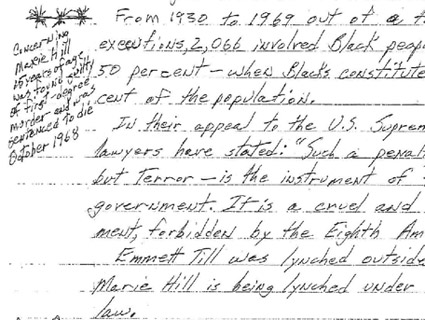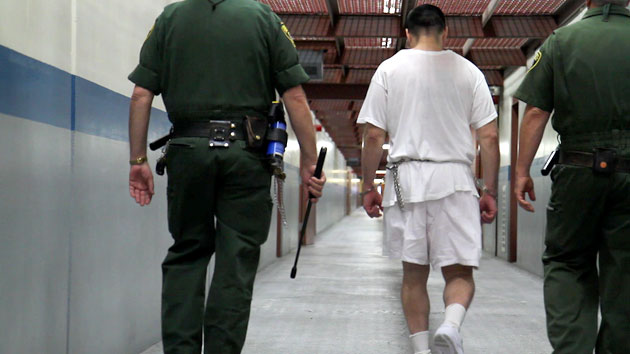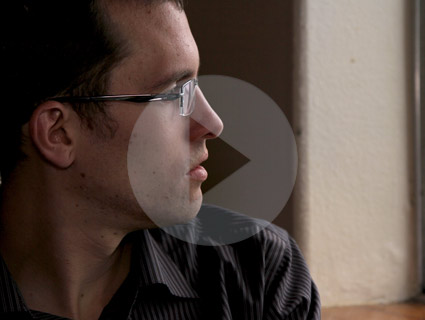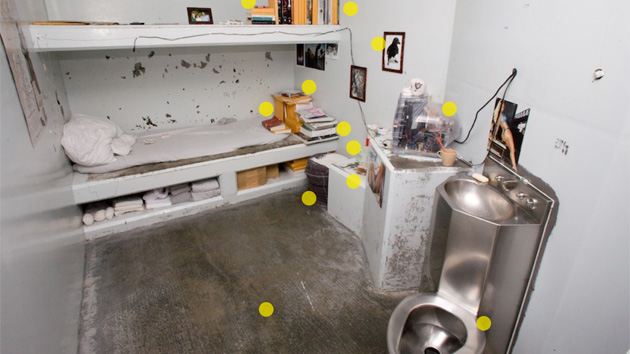
<a href="http://http://www.chrisbuzelli.com/">Chris Buzelli</a>
Mother Jones received word recently that our November/December issue had been banned by a Massachusetts prison facility. The issue’s cover story was Shane Bauer’s harrowing in-depth investigation into the overuse of solitary confinement in the US prison system—but that apparently wasn’t the reason the magazine was rejected by Federal Medical Center Devens. It was censored because of a naked lady.
A couple of weeks ago, Mother Jones received a letter from the prison’s warden, Jeffrey Grondolksy, informing us that our magazine, addressed to an inmate-subscriber, was being returned because it contained “sexually explicit information or material, or features nudity.” The letter stated that, in accordance with federal regulations, no Bureau of Prisons funds could be used to distribute such material.
Immediately, speculation swirled at the MoJo hive about which racy image in the November/December issue was the culprit. (WARNING: naked ladies.)
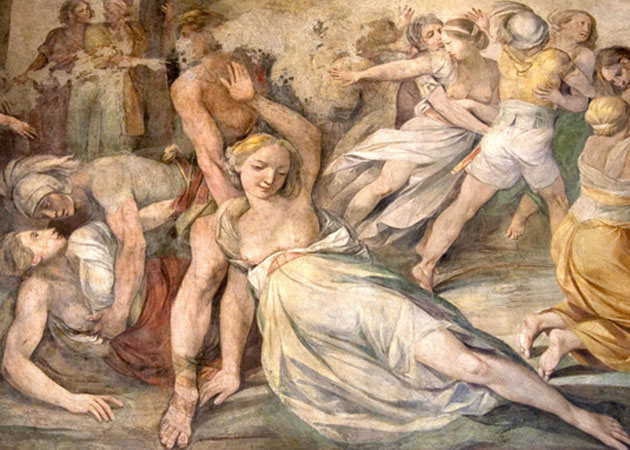 The Rape of the Sabine Women was featured in a pg. 10 sidebar called Mansplaining Rape. Fotopedia
The Rape of the Sabine Women was featured in a pg. 10 sidebar called Mansplaining Rape. Fotopedia
![Page 19 ad for a book about how "men are not capable of [a] new manner of thinking; however, the majority of women are." Athena Books Page 19 ad for a book about how "men are not capable of [a] new manner of thinking; however, the majority of women are." Athena Books](https://develop.motherjones.com/wp-content/uploads/images/adfinal630.jpg) Pg. 19 included this ad for a book about “human males’ addiction to war…and his universal domination of women.” Athena Books
Pg. 19 included this ad for a book about “human males’ addiction to war…and his universal domination of women.” Athena Books
 Just look at her! pg. 38
Just look at her! pg. 38
 From pg. 26 of Bauer’s story: Inside an inmate’s isolation cell at Pelican Bay Prison. #meta
From pg. 26 of Bauer’s story: Inside an inmate’s isolation cell at Pelican Bay Prison. #meta
 pg. 34
pg. 34
A call to Grondolsky to inquire about the offending image was directed to Todd Chapman, the supervisor of correctional systems at Devens, who revealed that the objectionable nakedness was the pg. 19 ad image featuring a depiction of Eve. Chapman explained that Grondolsky is pretty strict when it comes to enforcing the no smut rule. And for “certain types of offenders,” he said, there is “zero tolerance. Our warden is pretty 100 percent. It could be something as small as a statue” or “even if a kid drew a nude picture.” He did allow that the law gives leeway for anthropological or scientific content.
Indeed. The law says, “Publications containing nudity illustrative of medical, educational, or anthropological content may be excluded from this definition.” Moreover: “The Warden may reject a publication only if it is determined detrimental to the security, good order, or discipline of the institution or if it might facilitate criminal activity. The Warden may not reject a publication solely because its content is religious, philosophical, political, social or sexual, or because its content is unpopular or repugnant.”
Bauer’s solitary confinement story details the petty offenses for which California prisoners get “validated” as gang associates, and consequently thrown into isolation for years. Among them: possession of black literature, left-wing material, and publications advocating for the abolition of prison isolation units.
But the magazine was not banned because Bauer’s solitary story was “political” or “unpopular.” It was censored because of an advertisement marketed to the geriatric set. And just like that, investigative journalism with pictures of flesh gets lumped into the no good list along with materials that describe how to make a bomb, show prisoners how to escape, instruct them on “brewing alcoholic beverages,” or are “written in code.”
Grondolsky’s justification for rejecting the latest issue of Mother Jones may not even be covered within the bounds of the regulation he cites, which refers to publications that “feature” nudity. According to the statute, this means “the publication contains depictions of nudity or sexually explicit conduct on a routine or regular basis or promotes itself based upon such depictions in the case of individual one-time issues.”
It’s not the first time MoJo has been trashed by a prison. Mailroom censors at a Texas prison banned the September/October 2007 issue because it contained a picture of a nude child…in a story on the dangers of mining. (Guess what did get past the Texas prison censors that year? Letters to Penthouse XXVIII.)
All is not lost though. Upon receipt of the censorship notice, Mother Jones‘ Sharzy Makaremi promptly cut out all possible offending breasts, etc. and sent the magazine to the inmate, along with a letter contesting the rejection. When I spoke to Chapman he said he had heard that “someone pulled the page out and sent it back, so the inmate should be receiving that today.”
